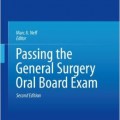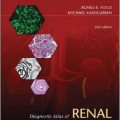دانلود کتاب بیماری های کلیه شرییر (۲ جلدی)
Schrier’s Diseases of the Kidney, 2-Vol, 9ed
- Structural, Functional Correlations in the Kidney
- Clinical Evaluation
- Cystic and Tubular Disorders
- Infections of the Urinary Tract and the Kidney
- Acute Renal Injury
- Hypertension
- Glomerular, Interstitial, and Vascular Renal Diseases
- Systemic Diseases of the Kidney
- Disorders of Electrolyte, Water, and Acid-Base
- Chronic Kidney Disease
- Management of End-Stage Renal Disease
- Content has been consolidated into two volumes
Plus, with this new edition you have FREE online access to the companion website that contains fully searchable text and an image bank so you have access to the content anytime, anywhere.
Review
“This is probably the most comprehensive work available on the diseases of the kidney. It is also an authoritative book, with the collective knowledge and insight of renowned international experts assembled within its pages. Yet it is concise and tightly organized, considering that medical information usually tends to be encyclopedic in nature, especially when looking at its many aspects. But most important of all, the information in this book is easily accessible. How so? First, by turning to the pages of the sections and chapters of this very well-organized book that we itemize below, you will easily find the topics you want to read on. Second, by going online and registering your copy (see instructions below) you can quickly locate what you’re looking for, and much more. As before, the ninth edition of this classic work has been put together to provide the most comprehensive and updated information for academic and practicing physicians to help care for their patients with kidney disease and hypertension. This massive two-volume book represents not only the work of the five editors…but in total over 200 physicians and other experts in various medical specialties. Most of the contributing authors of the 86 chapters in the eleven sections of this book are from the United States, but many are from 19 other countries, namely Belgium, Brazil, Canada, China, Egypt, France, Germany, India, Italy, Japan, Lebanon, Poland, South Korea, Spain, Sweden, Thailand, the Netherlands, Turkey, and United Kingdom. The best way for medical students, residents, and practitioners in nephrology to know the extent of the coverage of this book is to look at the titles of the eleven sections that comprise its contents, which we list below:
- Structural and Functional Correlations in the Kidney
- Clinical Evaluation
- Cystic and Tubular Disorders
- Infections of the Urinary Tract and the Kidney
- Acute Kidney Injury
- Hypertension
- Glomerular, Interstitial, and Vascular Renal Diseases
- Systemic Diseases of the Kidney
- Disorders of Electrolyte, Water, and Acid Base
- Chronic Kidney Disease
- Management of End-Stage Kidney Disease
The entire contents of this book are accessible online and fully searchable. Other useful features are also available online that are not found in the book.
There have been many medical developments in nephrology since the last – eighth – edition was published. This current edition was released to incorporate those advances in this medical specialty. The editors inform us that nephrology is a field that combines the basic and clinical sciences. They write that the primary goal of this ninth edition is to successfully integrate this knowledge. But they point out that the 11 sections of this text “can stand on their own.” To give you an overview of what you will find in the two volumes of this large book, the first section presents the structural, physiologic and biochemical aspects of the kidney. You will find the latest advances in molecular and cellular biology covered in it, with emphasis on the most current developments on cell imaging, ion channels, and receptors. The other 10 sections that follow provide material on the various diseases. Each section begins with a chapter on the pathophysiology of the particular disease or diseases covered. The editors have provided chapters within a section that present the various aspects of the subject of the section. This makes the coverage comprehensive. In turn, the choice and organization of materials within the chapters themselves serve to enhance the comprehensiveness of the entire book. As an example, let’s take a look at Section II entitled Clinical Evaluation, which contains five chapters: 9 through 13, that present different means of evaluating the condition of kidney:
۹. Laboratory Evaluation of Kidney Disease
۱۰. Ultrasonography and Nuclear Medicine
۱۱. Computed Tomography and Magnetic Resonance Imaging
۱۲. Diagnostic Angiography and Therapeutic Endovascular Intervention
۱۳. Renal Biopsy: Indications and Evaluation
Another valuable feature of this book is the large number of graphics throughout the book. These facilitate and enhance learning and understanding of the subjects, topics, and subtopics covered in the various chapters. You will find numerous kinds of graphics including boxes, charts, diagrams, drawings, micrographs (including many through an electron microscope with fine details), schematics, tables, and other forms of presentation of information. Nephrology is a complicated medical specialty to study, with a lot of detailed information. So the editors have ensured to provide you with numerous materials for further study on any topic. They present long lists (in some instances, several pages long) of information sources in the References section at the end of each chapter. Among them are articles in journals, chapters in books, titles of books, as well as other valuable resources. This is a monumental work of immense benefit to those studying to practice in this field, as well as those already in it, to help patients with kidney diseases and disorders.”




































































































































